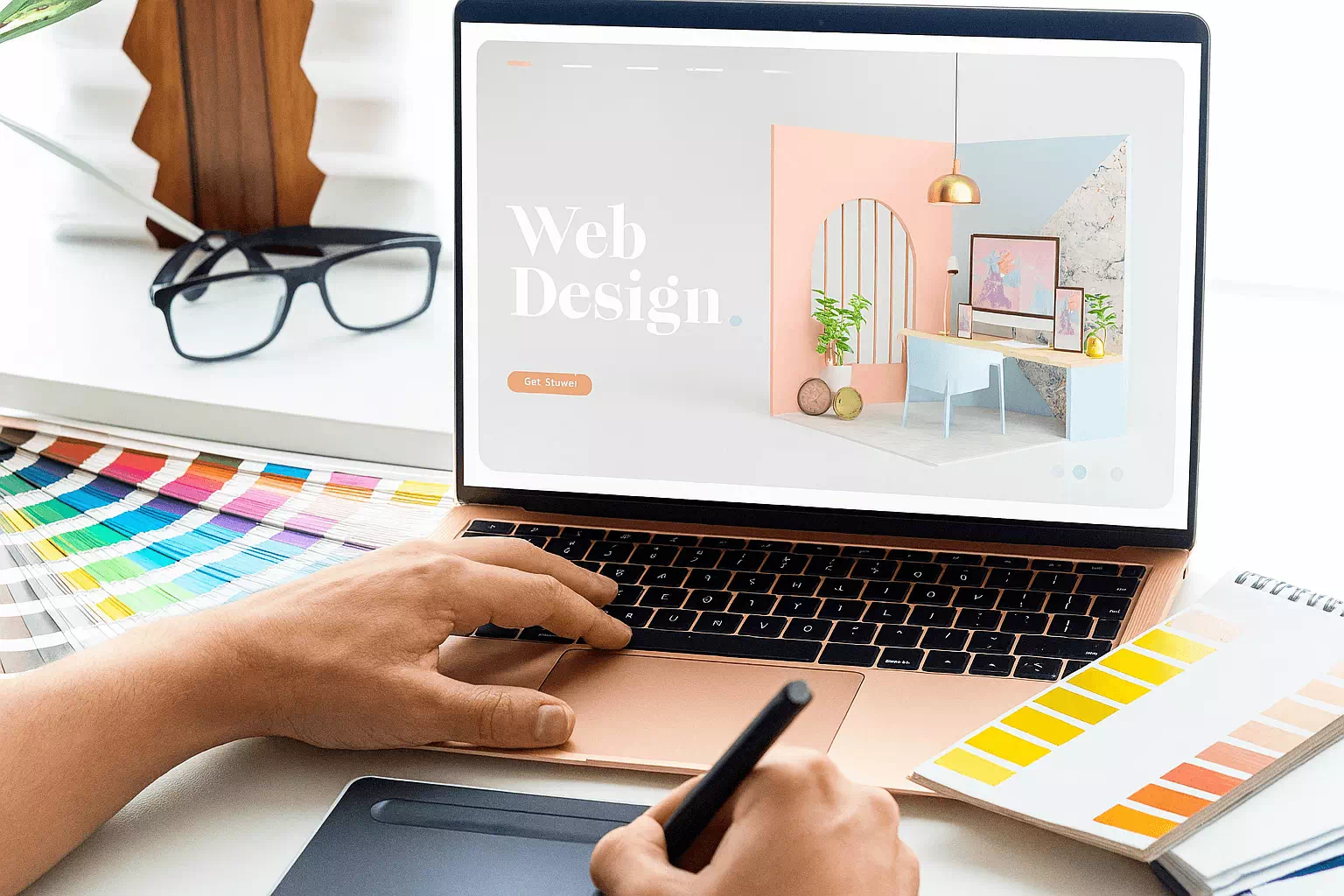The First Impression Is Always Visual
When users land on a website, their brain processes visuals faster than it does text. Before reading a single word, visitors subconsciously assess the design. The layout, spacing, color scheme, and overall aesthetic form a snap judgment. This moment is critical. A site’s visual impact can either instill trust or prompt a quick exit.
Modern consumers expect sophistication in presentation. Even the most well-written content struggles to gain traction when framed within poor design. Cohesive visual presentation is not just about looking polished; it’s about establishing instant credibility. Clean lines, intentional color palettes, and intuitive navigation work in unison to set the tone for interaction. If your web design lacks unity, your content won’t stand a chance at converting interest into action.
In contrast, cohesive design aligns elements to visually guide users into engaging with content. When visitors know where to look and what to do next, their journey becomes effortless. This psychological nudge is powerful, often more so than cleverly written headlines.
Why Consistency Outperforms Cleverness
It’s tempting to believe that copywriting alone can carry a brand message. However, even the wittiest tagline is easily overlooked if buried in a cluttered, inconsistent layout. Users today are not just skimming for information, they’re feeling their way through digital environments. Consistency in design offers emotional cues. Fonts, buttons, icons, and spacing must all feel like part of the same story.
Design cohesion works on a subconscious level, reinforcing brand recognition with every scroll and click. Consider the importance of visual hierarchy. If typography sizes and styles vary with no rationale, the user must exert extra effort to interpret meaning. When hierarchy is clear, the eye flows naturally through the content. This kind of intuitive structure allows users to receive information passively and pleasantly. It’s not about dumbing down design, it’s about minimizing friction.
On the other hand, inconsistency introduces micro-frustrations. Users may not consciously note the misalignment, but the experience feels less professional, and trust begins to erode. Strong copy gets buried under poor UX choices, diminishing overall impact.
The Role of User Experience in Message Retention

User experience is more than just navigation. It includes how fast a site loads, how easy it is to use on mobile, how predictable interactions are, and how enjoyable the entire visit feels. Cohesive design feeds into all of these. A user interface that feels fluid and familiar increases time spent on site and decreases bounce rate. These are metrics that matter not just for user satisfaction but for SEO as well.
In today’s market, users demand more than clarity, they want delight. They want interactions to feel effortless and pleasant. If a user struggles to find a button, read a block of text, or differentiate content sections, the likelihood of revisiting that site plummets. No copy can convince someone to stay when the environment feels broken.
When a user enjoys interacting with your design, they are more likely to absorb and remember your message. Visual metaphors, brand-consistent color stories, and smart placement of visual assets all contribute to memory retention. This is why leading companies invest heavily in design systems and UI guidelines. They know that design is not just decoration, it’s delivery.
The Competitive Advantage of a Unified Aesthetic

A cohesive design isn’t just about matching fonts and colors. It’s about presenting a unified brand identity across every digital touchpoint. From websites to landing pages, social content to mobile interfaces, consistency establishes authority. Whether a visitor clicks through an ad or stumbles across your site organically, their experience should reinforce the same brand story.
The benefit? A sharp visual identity increases brand recall. Users may forget specific copy, but they’ll remember how your website made them feel. They’ll remember the confidence, energy, or calmness conveyed through design choices.
Many businesses, especially startups, underestimate the role of aesthetics. They focus on content strategies and keyword optimization without investing in the visual scaffolding that makes content shine. Yet the brands that lead their industries, across sectors, understand that cohesive design amplifies everything else: marketing, messaging, and momentum.
By working with a design-forward partner like Webdev200, businesses unlock this advantage. Every component, from layout to typography, is carefully crafted to resonate with the intended audience. The result is a visual language that supports growth, engagement, and trust without needing to overcompensate through dense content.
Emotional Engagement and Conversion Through Visual Cues
People respond to emotion before logic. Great design plays with this human truth. A warm color palette can create a sense of comfort; bold typography can suggest confidence. Even the shape of buttons can influence user interaction. All these visual cues communicate tone and intent before a single sentence is read.
Design also serves as a cue for call-to-action relevance. If CTA buttons blend into the background or appear in unpredictable places, conversion rates fall. Cohesive design ensures CTAs stand out without jarring the experience. Placement, color contrast, and shape work together to move users down the funnel.
Furthermore, the emotional impact of design carries over into perceived value. A visually outdated or chaotic website makes visitors question the legitimacy of its offerings. Even if your copy claims innovation, if your design doesn’t reflect that, the message falls flat. Visuals must prove what words claim.
Design, when done right, speaks to human instinct. It encourages interaction, fosters loyalty, and creates emotional resonance. That’s how conversion happens, not by shouting louder with copy but by whispering visually in a way that feels persuasive.
Cohesive Design as a Long-Term SEO Asset

Search engines favor websites that provide a seamless user experience. Design cohesion influences key SEO indicators: bounce rate, time on site, mobile responsiveness, and structured content. These aren’t just backend metrics; they are direct results of front-end design decisions.
Google’s algorithm updates consistently prioritize user experience. Websites that feel clunky, fragmented, or hard to navigate fall behind in rankings, even if their copy is strong. A cohesive layout ensures proper indexing, helps with structured data, and makes content easily digestible. These are SEO fundamentals masked as design choices.
Webdev200 ensures that design consistency is woven into every pixel. That means fewer redesign cycles and better SEO performance over time. Investing in design upfront pays long-term dividends through improved visibility, lower ad spend, and higher organic traffic.
From wireframes to final implementation, consistency remains a guiding principle. Responsive design standards, fast-loading media, and clean code are all outcomes of a visually unified strategy. This makes your content more discoverable and your brand more trusted.
Final Insight
A cohesive design is not a supporting actor, it is the stage upon which your content performs. Strong copy may attract attention, but design determines how that attention is received and whether it turns into action. In a world where users judge within seconds, visual presentation becomes your brand’s first and most lasting impression.
Rather than focusing solely on what your site says, focus on how it feels. Let the aesthetics lead. Create an environment that makes your content easier to trust, easier to follow, and easier to act upon.
Webdev200 understands that successful digital experiences begin with cohesion. From creative branding to UX design, the focus is always on aligning every element to serve the user’s journey. Because when design and copy work together, results speak for themselves.
Ready to elevate your digital presence? Contact us today to discover how Webdev200 can transform your online experience through cohesive, conversion-driven design.

